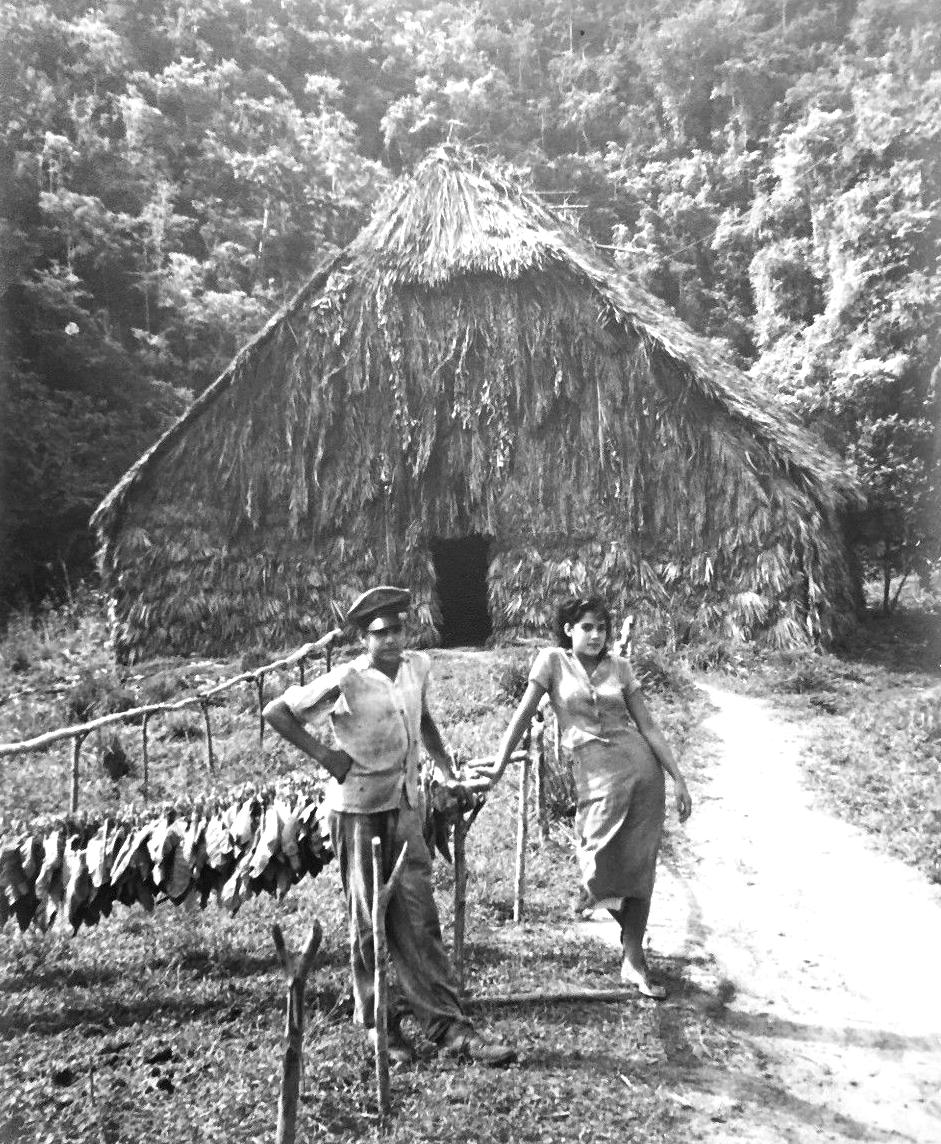
Cuban Economy--Independence (1903-59)

Figure 1.--Cuba's primary agricultural crop and export was sugar and still is. The climate and land is ideal for sugar prouction. A lesser, but still important crop is tobacco. Here is a small tobacco farm in hilly Piñar del Rio Province during the 1950s. Cuban cigar became famous all over the world.
|
|
The sugar industry recovered after the inepensence War, but required substantial Ameican investment making the United a major factor in the Cuban economy. Cuba had not been a major player in the 17-18th century Caribbean sugar boom as it was a kind of backwater Spanish colony, but it became a key sugar producer in the 19th century. Cuba resumed massive exports. Most of the sugar was exported as the raw product, but Cuba also developed a rum industry. While sugar dominated the Cuban economy, there were other important crops. Tobacco was of some importance and Cuban cigars became became a preimum product in America and Europe. Mining was of some imprtance, especially nickel and cobalt--two metals which the United states does not produce in any quantity. The Moa Bay complex in eastern Cuba was actually developed during World War II by the United States to help supply America's arsenal of Democracy. There is also mngnese and some copper mining. Production of raw material also includes asphalt, bentonite, cement, chromite, clay, crushed stone, feldspar, gypsum, iron ore, lime, limestone, marble, salt, sand, steel, sulfuric acid, volcanic ash, and zeolite. After World War I, Cuba in easy reach of the United States began to develop a tourist industry which by the 1950s was of some importance. The attractions were beautiful unspoiled tropical beaches, sport fishing, and glitteting Havana nightlife, both clubs and casinos. Cuba after independence developed a thriving middle class achieving prosperity and an important degree of social mobility. Cuba had a substantial, affluent middle class and in the 20th century became one of the most affluent Latin American coiuntries. The proximity to the United States and U.S. investment led to rapid growth and Cuba's emergence as one of the most wealthy Latin American countries, albeit one with inequities. Cuban economic statictics were impressive, especially for the Caribbean but even compared to South American countries. Cuba ranlked high in most indices of well being. Cuba ranked in hemishric terms fifth in per capita income, third in life expectancy, second in both per capita car ownership and telephones, and first in the percaita number of televisions. The literacy rate was over 75 percent, high by regional standards--the fourth highest in Latin America. Health care standards were high. Cuba ranked 11th in the world in the number of doctors per capita. Private clinics and hospitals provided services for the poor, at least in the cuties. Cuba's income distribution compared favorably with other regional countries. Cuba's primary economic problem was poorly paid agricultural workers who only had seaonal work, developed into a kind of national underclass. To an extent this was an artifact of slavery. A related problem in the countryside were poor peasants with small plots engaged in subsistance farming. Neither health care services or schools were readily available in the countryside.
CIH

Navigate the Children in History Website:
[Return to the Main Cuban economy page]
[Return to the Main Latin American economy page]
[Return to the Main Cuban page]
[Return to the Main Latin American page]
[Introduction]
[Animals]
[Biographies]
[Chronology]
[Climatology]
[Clothing]
[Disease and Health]
[Economics]
[Geography]
[History]
[Human Nature]
[Law]
[Nationalism]
[Presidents]
[Religion]
[Royalty]
[Science]
[Social Class]
[Bibliographies]
[Contributions]
[FAQs]
[Glossaries]
[Images]
[Links]
[Registration]
[Tools]
[Children in History Home]
Created: 6:21 AM 8/11/2016
Last updated: 6:21 AM 8/11/2016



